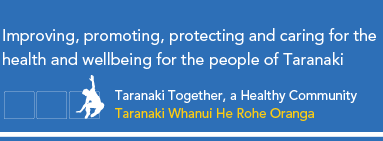Birthing
Primary Birthing (low risk)
Women who are experiencing normal pregnancies should be offered the option and encouraged to give birth in primary maternity facilities or at home. The evidence clearly demonstrates that women who receive effective antenatal care and are assessed to be at low risk for complications, will give birth to healthy babies and need fewer interventions if they are supported to give birth in a primary maternity
unit or at home.
NZCOM Consensus statement on normal birth
- Home Birth: http://homebirth.org.nz/
- Base Hospital offers primary and secondary birth but there is not a separate primary birthing suite
- Hawera Primary Maternity Unit offers primary birth in a low technology environment
Please discuss these options with your lead maternity carer.
Birthing Pool
There is a birthing pool at Taranaki Base Hospital and at Hāwera primary Maternity Unit for women who fit the criteria to use for pain relief in labour and to give birth in if they choose.
Who can use the pool?
You can use the pool if are 37 completed weeks pregnant, and provided you have had a problem free pregnancy, and
- You are expecting one baby
- Your labour is progressing normally
- Your baby is coming head first
- Your baby’s heartbeat is within satisfactory limits
- You have asked to use the pool for pain relief during labour and/or to birth your baby into the water
Evidence shows that there are no increased risks with waterbirth provided women meet the above criteria. The decision whether or not to use the pool should be made after discussion with your LMC or midwife. In some circumstances you may be advised not to use the pool – your LMC or midwife will guide you.
Unfortunately you cannot book the pools. If they are available when you arrive at hospital and it has been agreed that it is suitable for you to give birth to your baby in the water, you are welcome to use one.
Advantages
For you and your partner
- You may need less pain relieving drugs like pethidine or epidural
- You may have greater comfort and mobility
- The buoyancy reduces abdominal pressure and this promotes more effective contractions
- You feel more in control of your labour
- Your partner may feel more involved
For your baby
Your baby
- will have less side effects from pain-relieving drugs
- may have a calmer and more gentle birth under the water than on dry land
Preparing for a water birth
It is a good idea to practice squatting if you think this will be the position you may want to adopt whilst in labour, with your partner supporting you under the arms, or this may be a position you adopt whilst in the pool.
Many women do not wear anything whilst in the pool, but you can wear a crop top or a tshirt, whichever feels most comfortable. It is a good idea for your partner to wear casual clothes.
Useful things to bring
- Towelling robe
- 2 large bath towels (old, as they may become soiled - we provide towels but they are small for the pregnant body)
- Inflatable pillow or float
- Plenty of what you like to drink (non-fizzy)
Pain relief
Entonox (gas and air) is available if needed.
Leaving the pool
In some circumstances your midwife may ask you to leave the pool, for example if:
- Your baby opens its bowels whilst in the womb
- You have an excessive blood loss whilst in the pool
- There is concern about your baby’s heartbeat
- Your contractions slow down
- Your labour does not progress as expected
You may decide to leave the pool at any time.
You can leave the pool after the birth of your baby and delivery of the placenta. However some women choose to stay in the pool to deliver the placenta. The delivery of the placenta may be helped by an injection given into your thigh or you may choose to let nature take its course and deliver the placenta naturally.The choice is yours if your labour and birth have been normal. Your LMC or midwife will be happy to discuss this with you.
Afterwards
Depending on your needs and personal preference, you may go home soon after the delivery. If this is not suitable for you or if you would prefer to stay in hospital, you will be transferred to Ward 15 - postnatal ward.
Common questions and answers
Why doesn’t the baby breathe underwater?
The baby will be born into a water temperature of 37ºC. This is the temperature of the amniotic fluid (the water surrounding your baby during pregnancy). It is the drop in temperature and the stimulation of contact with air in a birth ‘on dry land’ which makes the baby breathe. In a pool delivery there is very little stimulation and the baby does not breathe until it comes into contact with the air when it is taken out of the water.
Further questions:
If you have any other questions about waterbirth, please ask your midwife
Whilst using the pool at Te Whatu Ora Taranaki
- Please do not enter the pool unless your midwife has instructed you to do so.
- Please take note of where the call bell cord is in case you need your midwife whilst she is out of the room.
- No more than two support persons should be present in the birthing pool room.
- If your midwife asks you to leave the pool then it is due to her concern about yours or the baby’s wellbeing-please do as she asks quickly.
- Water spillage should be kept to a minimum and mopped up as soon as they occur.
- Please be careful with equipment, personal effects such as cell phones accidentally dropping into the pool.
Last updated:
Wednesday, January 17, 2018


